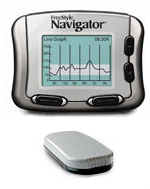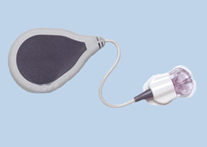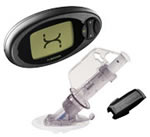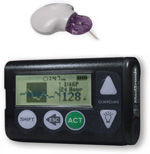Continuous Glucose Monitoring System (CGMSs) List
A Continuous Glucose Monitoring System (CGMS) is a device that records blood sugar levels throughout the day and night. You can integrate LIVE data from Dexcom, FreeStyle Libre and other CGMS directly into Jade for dosing from – never enter a blood sugar manually again! See the FAQ for details.
- DexCom, including G7, G6, G5, G4 with Share
- Abbott
- Abbott FreeStyle Navigator
- Medtronic
- Medtronic Guardian REAL-Time
- Medtronic Paradigm REAL-Time
- Minimed Paradigm w/REAL time CGMS
- Abbott FreeStyle Libre, using MiaoMiao or LinkBluCon
- Abbott FreeStyle Libre 2 – with LibreLink
- Others
 |
Abbott FreeStyle Navigator® |
 |
MiniMed Paradigm® REAL-Time System |
 |
Dexcom SEVEN Plus |
 |
Guardian REAL-Time Continuous Glucose Monitoring System |
Related:
- Diabetes and Tele-Health
- Diabetes and Symlin
- Diabetes and Glimepiride
- Diabetes and Gastroparesis
- Diabetes and Lipohypertrophy
- Diabetes and High Impact Exercise
- Diabetes and Menstruation
- Diabetes and Adrenalin
- Diabetes and Sick Days
- Diabetes and Stress
- Diabetes and Alcohol
- Books and Audio Resources
- Nerve Damage – How does diabetes affect the nerves?
- Diabetic Thyroids
- Diabetic Kidneys
- Diabetic Blood Pressure
- Diabetic Eye Exams
- Preventing Night Hypos – Overnight BGL Testing
- Delay Eating
- Glucagon Rescue
- Total Daily Dose (TDD)
- Continuous Glucose Monitoring System (CGMSs) List
- Insulin Pump Holidays – Diabetes
- Insulin Pumps List
- Blood Glucose Meters List
- Insulin Pump Accuracy
- Dead In Bed
- Points Report
- Blood Glucose Log Book
- A1C/HbA1C – what is it?
- Ketones
- Jelly Beans
- Starchy Carbs
- Meal Sizes
- Low-GI foods
- High-GI foods
- Managing Diabetes at School
- Diabetes Back to School Checklist
- Basal Insulin
- Bolus Insulin
- Hyperglycaemia – High Blood Sugar
- Long Term Complications of Diabetes
- Glucose Tablets for Diabetes
- Hypoglycaemia – Low Blood Sugar
- Diabetes and Exercise
- Exercise
- Diabetes and Pain


